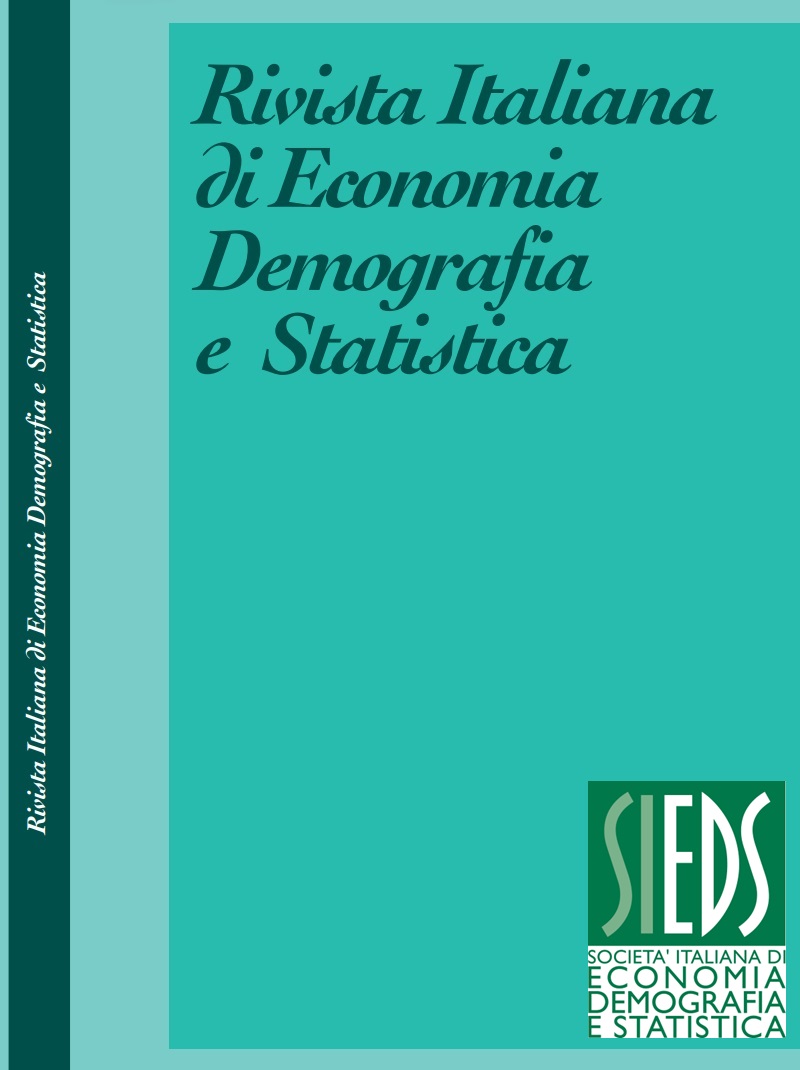Training model and interviewer performance in the permanent population census
DOI:
https://doi.org/10.71014/sieds.v79i2.396Keywords:
Performance, Interviewer, Training Model;Abstract
Training interviewers is crucial in survey design to minimize interviewer effects, which impact non-sampling errors (partial non-response, refusals, and measurement errors) and data quality. Istat has developed expertise in training interviewer networks and continuously works on strategies to improve and harmonize its training model, adapting to societal changes and respondents' lifestyles.
This study examines the effect of interviewer training on survey performance to improve the training program. The data analyzed relate to the performance of 5,894 interviewers trained for the 2023 Italian Population Census "List" survey.
To explore the relationship between training and fieldwork performance and identify interviewer profiles, we used a statistical classification method (decision tree), considering socio-demographic and geographical factors as potential covariates.
The results represent a crucial step toward the ongoing use of statistical methods to enhance the data collection process.
References
BALÌ N. 2015. La formazione dei rilevatori. In ISTAT (Eds.) La nuova indagine sulle spese per consumi in Italia. Istat, pp. 70-78 On https://www.istat.it/it/files//2016/03/Indagine-spese-per-consumi.pdf.
BALÌ N., CECCARELLI C., FIORI M.T., LUGLI A., ROSSETTI F. 2023. Impact of digital learning on the interviewer’s performance, RIEDS. Rivista Italiana di Economia Demografia e Statistica Vol. 77, No.1, pp 65-76.
BALÌ N., FEDERICI A. 2014. Le strategie formative degli attori coinvolti nel lavoro sul campo. In FREGUJA C., ROMANO M.C. (Eds.) La modernizzazione delle tecniche di rilevazione nelle indagini socio-economiche sulle famiglie. Istat, pp. 91-100. On http://www.istat.it/it/archivio/145721.
BERNARDINI A., FASULO A., TERRIBILI M.D. 2014. A Model Based Categorisation of the Italian Municipalities Based on Non-Response Propensity in the 2011 Census, RIEDS. Rivista Italiana di Economia Demografia e Statistica, Vol. 68, No. 3, pp. 79-86.
BONTEMPI K., PIETROPAOLI S. 2024. Composite indices for measuring the “complexity of data collection” in Italian municipalities, RIEDS. Rivista Italiana di Economia Demografia e Statistica, Vol.78, No.1, pp. 195-206.
DAIKELER J., BOSNJAK M. 2020. Chapter 4: How to Conduct Effective Interviewer Training: A Meta-Analysis and Systematic Review. In OLSON K., SMYTH J. D., DYKEMA J., HOLBROOK A. L., KREUTER F, WEST B. T. 2020. Interviewer Effects from a Total Survey Error Perspective. Boca Raton: CRC Press.On https://digitalcommons.unl.edu/cgi/viewcontent.cgi?article=1001&context=sociw DOI: https://doi.org/10.1201/9781003020219-6
EUROSTAT. 2019. Quality Assurance Framework in the European Statistical System. On https://ec.europa.eu/eurostat/documents/64157/4392716/ESS-QAF-V1-2final.pdf/bbf5970c-1adf-46c8-afc3-58ce177a0646
EUROSTAT. 2017. European Statistics Code of Practice revised edition 2017. On https://ec.europa.eu/eurostat/web/products-catalogues/-/ks-02-18-142
ISTAT. 2022. Codice italiano delle statistiche ufficiali. On https://www.sistan.it/fileadmin/redazioni/IMMAGINI/pdf/Codice-Italiano-Qualita__-Statistiche-Ufficiali.pdf
UNECE. 2019. Generic Statistical Business Process Model (GSBPM) (Ver 5.1). On https://statswiki.unece.org/display/GSBPM/GSBPM+v5.1
ISTAT. 2019. L'approccio trasversale alla formazione delle reti di rilevazione. Letture Statistiche. Metodi. On https://www.istat.it/it/files//2020/05/approccio-trasversale-alla-formazione-delle-reti-di-rilevazione-2020.pdf
ISTAT. 2018. Linee Guida per la Qualità delle Statistiche del Sistema Statistico Nazionale. On https://www.istat.it/it/files/2018/08/Linee-Guida-2.5-agosto-2018.pdf.
ISTAT. 2012. Linee guida per la qualità dei processi statistici. Rome. On http://www.istat.it/it/files/2010/09/Linee-Guida-Qualit%C3%A0-_v.1.1_IT.pdf
ISTAT. 2010. Dalla “riunione di istruzione” all’ e-learning 2.0. Un progetto di formazione continua “in rete per le reti” di rilevazione dell’Istat. Internal document.
ISTAT. 2006. Il sistema di indagini sociali multiscopo. Contenuti e metodologia delle indagini. Metodi e norme, 31. On https://www.istat.it/it/files/2014/06/met_-norme_06_31_il_sistema_di_indagini_multiscopo.pdf.
ISTAT. 2005. La rete di rilevazione Capi dell’Istat per la conduzione dell’indagine continua sulle Forze di Lavoro. Metodi e norme, 24. On https://ebiblio.istat.it/digibib/Metodi%20e%20norme/IST0047577Ed2005N24.pdf
RITSCHARD G., 2013. CHAID and Earlier Supervised Tree Methods. In MCARDLE J.J., G. RITSCHARD (Eds.) Contemporary Issues in Exploratory Data Mining in the Behavioral Sciences, New York: Routledge, pp. 48-74.
Downloads
Published
Issue
Section
License
Copyright (c) 2025 Nadia Mirante, Antonella Bernardini, Nunzia Balì

This work is licensed under a Creative Commons Attribution 4.0 International License.



